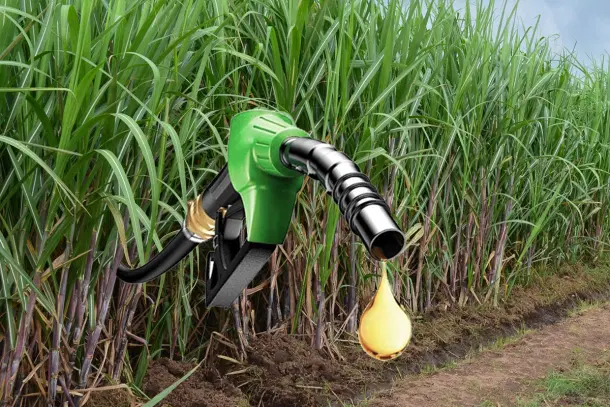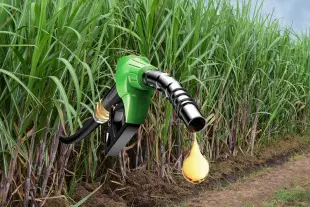Ideas
Government's Eight-Year Record Shows 10 Per Cent Ethanol Blending And Allocation Of 15.99 Crore LPG Connections
Nivedita Mukherjee
Jun 06, 2022, 04:26 PM | Updated 04:26 PM IST
Save & read from anywhere!
Bookmark stories for easy access on any device or the Swarajya app.


A year after the Union government released a “Roadmap for Ethanol Blending in India 2020-25” in June 2021, laying out a detailed pathway for achieving 20 per cent ethanol blending target by 2025-26 and an intermediate milestone of 10 per cent blending by November 2022, the government has hit the goal five months ahead of schedule, according to the Ministry of Petroleum and Natural Gas.
The target of achieving 20 per cent ethanol blending by 2025-26, is part of the government strategy to address environmental issues, enhance India’s energy security, reduce import dependency on fuel and save foreign exchange. Up to 2014, there were three strategic petroleum reserves (SPRs) in India with a capacity of 5.33 MMT. After 2014, the government built two new SPRs with a capacity of 6.5 MMT.
The National Policy on Biofuels in 2018 had set the indicative target to be fulfilled by year 2030 but encouraging progress due to various interventions made by the government since 2014 led to advancing the target of 20 per cent ethanol blending.
Public sector oil marketing companies (OMCs) have made coordinated efforts to attain an average 10 per cent ethanol blending in petrol across the country ahead of the set timelines of November 2022. Upto 2014, the country had 1.5 per cent ethanol blending which, since, has increased up to 9.98 per cent.
After 2014, the government has procured 320 crore litres of ethanol compared to 38 crore litres of ethanol procured in 2014. These developments in the course of the last eight years has augmented India’s energy security, translated into a forex impact of over Rs 41,500 crore, reduced greenhouse gas emissions of 27 lakh MT and also led to the expeditious payment of over Rs 40,600 crore to farmers.
The government has allocated 15.99 crore LPG connections from 2014 to 2022 as compared to 14.5 crore LPG connections achieved upto 2014. Of the total target 9 crore connections targeted under the Ujjawala scheme, the government has extended 8 crore LPG connections from 2014-19 in phase one of Ujjawala and 1 crore connections from 2019 till date under Ujjawala 2 while an additional 60 lakh connections have been approved.
Since 2014, India has increased the number of its LPG connections from 14.5 crore to 30.49 crore with plans to reach each household through gas pipeline connection in the upcoming years.
Since 2014, India has increased the number of its piped natural gas connections from 24.14 lakh to 90.90 lakh and this is expected to reach each household through gas pipeline connection in the upcoming years.
Since 2014, India has increased the number of its CNG stations from 936 to 4,013. The National Gas Grid coverage has also progressed from coverage of an operational length of 15,340 km up to 2014 to an operational length of 16,800 km between 2014 and 19. The covered operational length under NGG from 2019 till date is 20,334 km.
Under the sustainable alternative towards affordable transportation (SATAT) launched on 1 October 2018, oil and gas marketing companies have issued 128 letters of intent to entrepreneurs for procurement of compressed biogas under SATAT initiative till 31 March 2019.
In phase 2 of the scheme, between 2019 till date, OGMCs have issued 3,182 (cumulative) letters of intent to potential entrepreneurs for procurement of CBG.
So far, 23 CBG plants with a total capacity of 125 tonne per day have been commissioned and sale of CBG has been initiated from 30 retail outlets. While CBG is also being supplied to industrial customers, CBG injection in CGD network has been started in Gujarat.
However, progress in oil and gas exploration after 2014 has been measured and slows as reflected in the decline in domestic crude oil production since the financial year (FY) 2014-15, with the output dropping to just 28.4 million tonnes in FY22, the lowest since FY94. The production in 2021-22 represented a decline of 11.8 per cent from 32.2 MT in FY95, as per government and industry data.
This is despite the government, in February 2019, approving major reforms to enhance exploration activities by giving greater weightage to work programmes, simplified fiscal and contractual terms, bidding of exploration blocks under Category II and III sedimentary basins without any production or revenue-sharing with the government.
The total operational area allocated under nomination, pre-New Exploration Licensing Policy (NELP), NELP and coal bed methane is 453,340 square kilometre. After 2014, under the Hydrocarbon Exploration and Licensing Policy (HELP), an additional 191,925 sq/km area has been allocated under six Open Acreage Licensing Policy (OALP) bid rounds, according to ministry data.
Five bidding rounds have so far been finalised in which 105 exploration blocks have been awarded covering an area of approximately 156,579 sq/km. From the pre-fields to the nine rounds of NELP, discovered small fields (DSF) and the OALP rounds, at least 216 blocks are active now, that saw an investment of $45.18 billion.
The OALP Bid Round-VI, offering 21 blocks covering an area of approximately 35,346 sq/km, was also launched on 6 August 2021 but the Bid Round-VI attracted just three bidders with Oil and Natural Gas Corporation winning 18 out of the 21 areas awarded in May 2022.
While policy reforms to boost exploration activities have also aimed to attract domestic and foreign investment in virgin areas of sedimentary basins and accelerate domestic production, the participation has been lacklustre due to high risks. India needs to put in place quality data on geological prospects as investors have been averse to spending millions in surveying and drilling wells to establish reserves, preferring to tap established fields.
Nivedita Mukherjee is a senior journalist covering economy, business, and trade.





